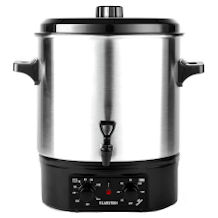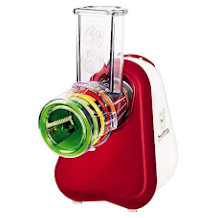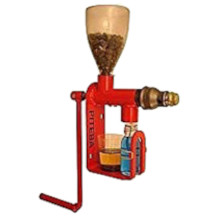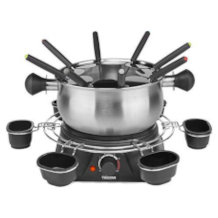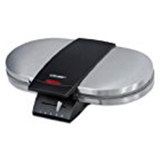Ice maker purchasing advice: how to choose the right product
- What you need to know
- With an ice maker, you can produce ice cubes much faster than with a simple ice cube tray.
- Ice makers are recommended if you need a large quantity of ice cubes, like at cocktail parties, garden parties and family celebrations.
- In addition to the less expensive air-cooled versions, there are also water-cooled ice makers that work independently of ambient temperature.
- A removable water tank is useful for thorough cleaning of the ice maker.
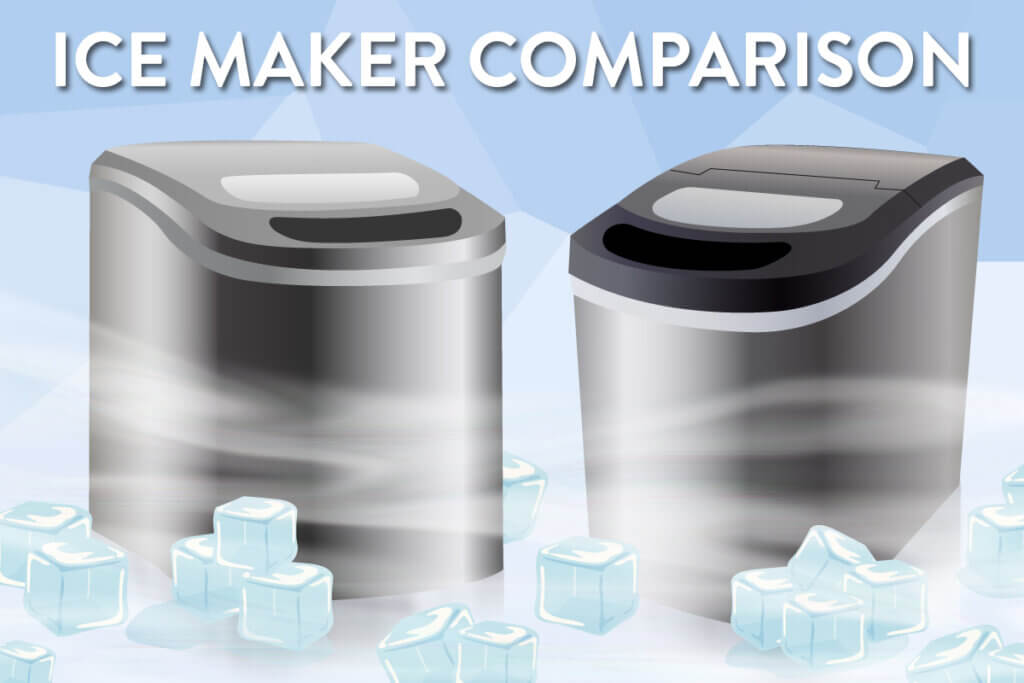
Ice cubes from a machine
Ice makers make ice cubes in less than 15 minutes. These electric household appliances consist of a high-performance compressor with pump system, which is surrounded by a robust housing. Many models also come with a display and a water level indicator.
How an ice maker works
The way in which ice makers work is quite simple. First, water enters the machine either via a water tank or via a pipe connected to the mains supply. The machine dips cooling ducts into the water, which are cooled down to just below freezing using a cooling unit similar to that of a freezer. The water freezes around the cooling ducts and hollow ice cubes form. As soon as the ice layer is thick enough, the excess water flows off. The ice cube machine then heats the cooling units briefly so that the ice cubes detach from the cooling ducts. They fall into the collection container and can be removed from there.
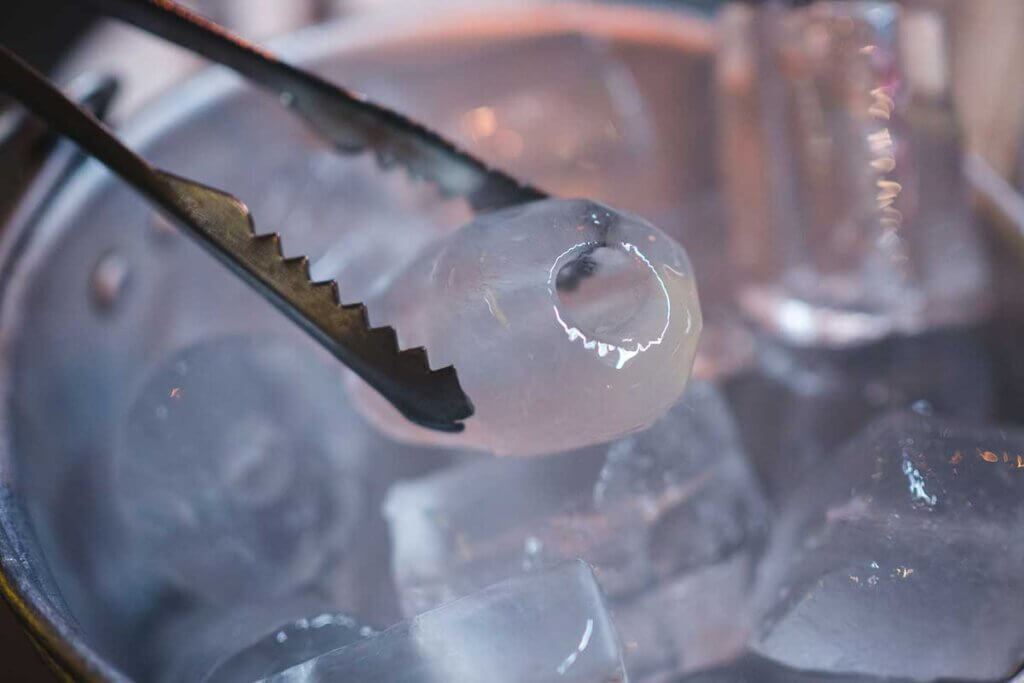
How long have ice machines been around?
The first version was developed by the Frenchman Ferdinand Carré in the form of an ammonia-absorbing refrigerating machine in 1859. Before then, ice cubes were considered a refreshing extra that people liked to serve in drinks, but making them was complex and difficult. Thanks to Carré’s machine, hundreds of kilograms of ice could be produced in a short time. In the years that followed, other inventors tried their hand at more modern cooling techniques. Finally, in 1876, the German Carl von Linde celebrated his great breakthrough with his compressed-ammonia refrigerator, which paved the way for the industrial production of ice.
The different types
There are big differences between air-cooled and water-cooled ice makers, as detailed below. Likewise, there are also differences between mobile ice makers which have a built-in water tank and permanent models with a mains water connection.
Air-cooled ice makers
Air-cooled ice machines are common in home kitchens. They can produce ice cubes within a few minutes so long as the ambient temperature isn’t more than 90 °F (32 °C). For the machines to work well, sufficient air circulation is essential. Fans mounted on the sides direct warm air currents out of the interior of the appliance. Thanks to this system, these ice machines do not require cooling water. They are cheap to run, and compared to water-cooled ice makers, they are inexpensive. They usually cost between $100 and $250.
Advantages
- Inexpensive
- Very quiet
- Suitable for use in private homes and in the catering industry
Disadvantages
- Requires ambient temperatures of less than 90 °F (32 °C).
- Take up more space
Water-cooled ice makers
While air-cooled ice machines are mainly designed for home use, water-cooled models are especially suitable for professional use in catering businesses. These machines can produce ice cubes at high ambient temperatures, which means they require cooling water.
Water-cooled ice makers have a water pipe running along the condenser which cools the machines with running water. They need a mains water connection, but they don’t depend on air circulation. Performance is not affected by high ambient temperatures or high humidity.
You need to keep an eye on the running costs – both electricity and water – with these machines. They can also be a bit trickier to use and set up than air-cooled machines. In addition, water-cooled ice makers are more expensive than their air-cooled cousins. Most water-cooled machines cost between $250 and $500. Professional machines for catering can cost upwards of $2,000.
Advantages
- Works independently of the ambient temperature
- Low-noise operation
- Powerful units for commercial use
Disadvantages
- High water consumption
- Higher maintenance costs
- Complicated programming
With or without connection to the water supply
Ice cube makers without a fixed water connection are compact and mobile. These small devices are suitable for situations in which there is no access to running water, like camping trips or parties outdoors. If you’re looking for an ice maker for occasional standard use you can’t go wrong with one of these. However, you should be aware that they produce a relatively small amount of ice compared to other machines.
Ice machines with a fixed water connection can produce much more ice and are therefore a better alternative for commercial use. Since they draw water via a hose and return any residual water, they are ideal for caterers who want perfect tasting ice cubes and a large production volume.
Important purchase criteria
The ice makers available on the market differ particularly in terms of their capacity and production speed. Inexpensive machines usually have a lower capacity. High-priced models, on the other hand, often have a large capacity and fast production speed.
Tank capacity
The tank capacity determines how many ice cubes can be made per cycle. The more capacity the water tank has, the more ice cubes can be produced. Manufacturers usually state the capacity of the water tank in liters or quarts.
Inexpensive models, for example, have a maximum capacity of two quarts (2L). More expensive appliances sometimes have a capacity of more than three quarts (3L). If you like to organize family get-togethers, go for a device with a tank capacity of at least three quarts (3L). The larger the tank, the less often it needs to be refilled.
Performance
A good ice maker with a relatively high wattage makes it possible to produce a lot of ice cubes in one go. 100 to 200 watt ice machines are adequate for use in private households. More rarely, you do see professional ice makers that have a power output of more than 200 watts.
Preparation time
Ideally, an ice maker should have a high power output so that the ice cubes are frozen in the shortest possible time. Most machines take a maximum of 15 minutes before they produce ice cubes in the first cycle. The preparation time is usually shorter with more expensive high-quality machines which have a higher wattage. Sometimes these machines take less than six minutes to make ice cubes.
Production capacity goes hand in hand with wattage. Manufacturers also refer to this as production volume, which is usually given as the quantity of ice per day in pounds or kilograms. Smaller appliances, which are primarily designed for private households, can typically make around 14-17 oz (400-500g) of ice per hour. Larger models can produce up to 24 oz (700g) an hour. Professional units can make up to 44 pounds (20kg) of ice cubes a day.
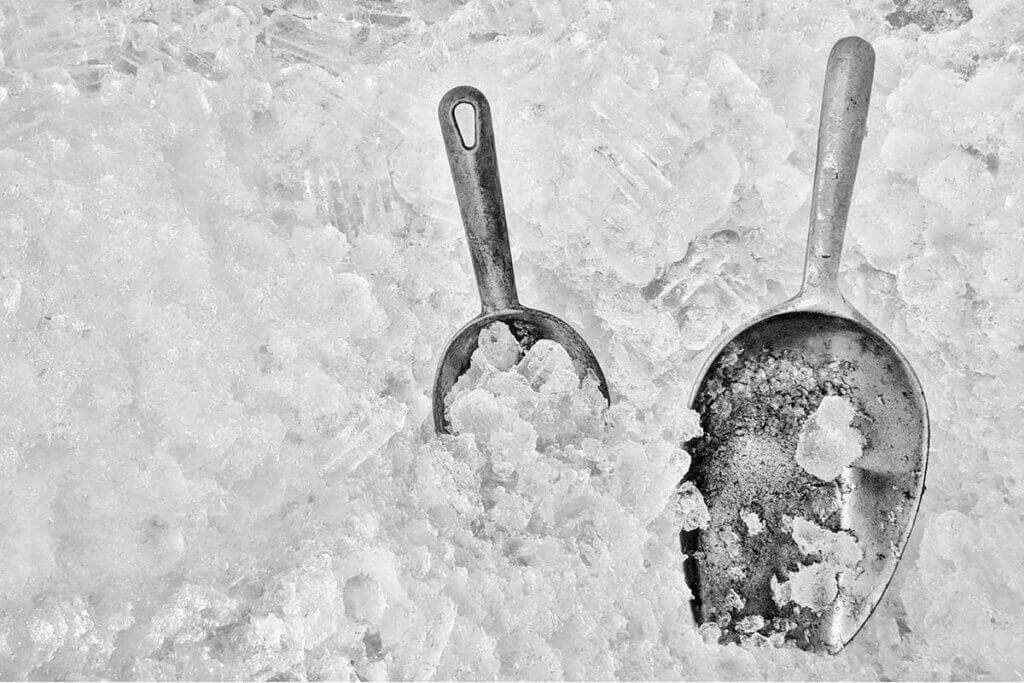
Small devices don’t have such a high production capacity, but are still suitable for home use when you need a smaller quantity of ice. Large production capacity is particularly important when a lot of ice cubes are needed at the same time for celebrations and parties. In this case, you’ll want to buy a machine with a daily capacity of at least 33 pounds (15kg).
In the professional sector, however, machines with a production capacity of more than 110 pounds per day are commonly used. These professional ice cube machines are equipped with a water connection and a significantly larger range of functions. Since machines with a fixed water connection are more susceptible to material degradation and contamination, you need to regularly clean and disinfect them.
Different ice shapes
Most machines produce ice cubes in the form of hollow spheres that melt slowly in a drink. Alternatively, you can buy machines that produce real square cubes. These dissolve slowly in drinks, even at higher temperatures. This makes them particularly suitable for fruit punch and liquids that you want to remain cool for a long period of time.
In addition, some ice cube makers produce other shapes:
- Ice chips for cooling ice buckets, for example.
- Ice flakes for attractive decoration of food and drinks
- Crushed ice for cocktails
How big should the collection container of an ice cube machine be?
A large collection container is just as important as a large water tank. It means you can store lots of ice, as well as easily take it out of the machine. Smaller ice makers for private use come with collecting containers with a capacity of up to 1.5 quarts (1.5L). Professional ice makers have significantly larger collection containers with volumes of up to 2.5 gallons (10 liters).
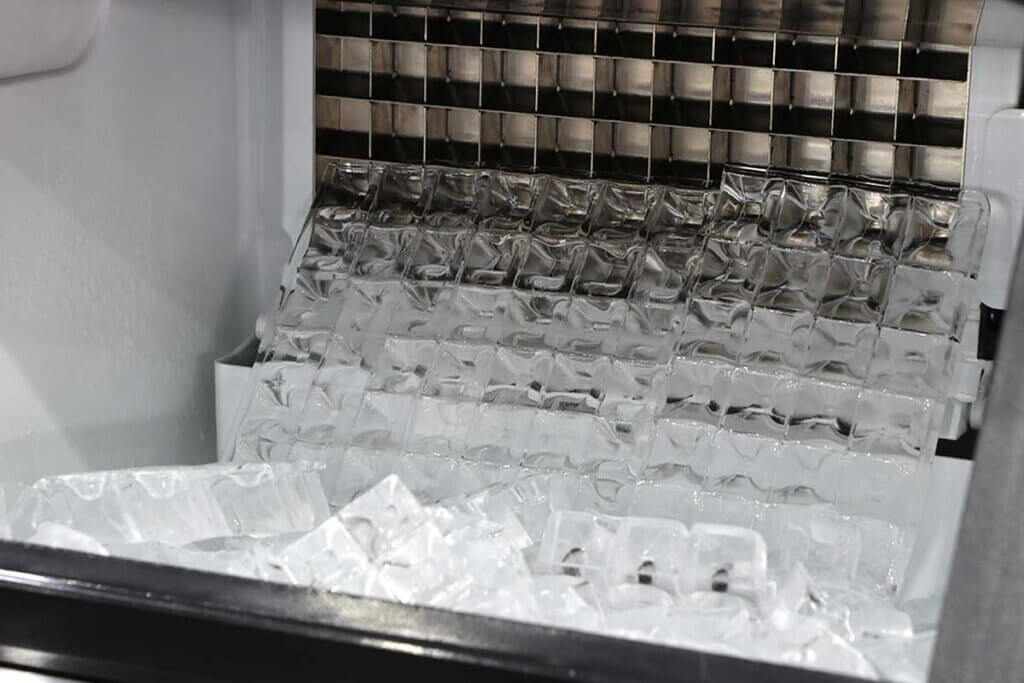
Noise
During production, ice machines make noise that some people find annoying. The level of noise depends on the model and the type of machine. In general, water-cooled machines are quieter than air-cooled machines.
How much does an ice maker cost?
Simple machines for home use without a mains water connection usually cost between $100 and $200. In the mid-price segment you start to find appliances with additional features such as illuminated displays, stainless steel housings and ice cube scoops. Ice cube makers for professional use come with additional functions such as a self-cleaning programme. Due to their high performance and wide range of functions, they can cost upwards of $1,000.
Other features of ice makers
In addition to the above-mentioned features, there are other extras that may help you decide which ice machine to buy:
Viewing window
A viewing window provides a view of the production process. This makes it easy for you to see whether you’ve got enough ice already.
Display
Many ice cube machines come with LCD or LED displays. LED displays are usually small lights that light up either red or green depending on the operating mode. If the ice maker has an LCD screen it can display numbers and graphics.
Timer
A few machines have an integrated timer. You can use this to set the time at which the machine starts making ice. Sometimes professional ice makers also have an automatic switch-off function. Depending on the brand, these appliances turn off automatically after a certain period of time to avoid consuming excess energy.
Energy-saving mode
In active operation, ice makers consume a lot of energy. To save on electricity costs, it is advisable to buy a model with an integrated energy-saving mode. Some manufacturers offer appliances that automatically switch to energy-saving mode after one cycle. Afterwards, you just need to press a button for the machine to be fully operational again.
Accessories
Ice makers often come with matching accessories included. Ice scoops are time-saving helpers which help you get the ice out of the collection container. Many appliances also come with ice tongs. These are great at big parties with lots of guests, as they can help themselves to the ice with tongs.
How to clean an ice maker properly
Once you get your ice maker, you need to use it properly. One important issue is cleaning. Since they are making things that you consume, you need to take the necessary steps to ensure appropriate hygiene. Regular cleaning reduces the risk of bacteria and germs accumulating in the water container or other parts of the machine.
But how often should an ice maker be cleaned? And which cleaning agents are suitable for getting the machine clean? The following tips will help you to care for your ice maker properly and prolong its life.
Disconnect from the mains
Before cleaning, disconnect the ice maker from the mains. This precaution is necessary so that the water doesn’t come into contact with a closed mains supply. If the machine has a valve with a connected water supply, drain any remaining water from the machine first.
Regular cleaning
Ideally, the ice cube maker should be wiped down with a damp cloth and dried with a paper towel after each use. When you do this, you should also clean all removable components thoroughly with a little water and a mild detergent.
Basic cleaning
If the machine is used regularly, it is a good idea to to treat it at least twice a year with vinegar water or a food-safe anti-scaling agent. Other, harsh cleaning substances such as some soaps should be avoided, as they can have an unpleasant effect on the taste of the ice cubes.
Putting the machine back into operation after cleaning
Ideally, cleaning should be followed by two to three test runs in which the remaining cleaning product residue gets rinsed out. So, make two to three runs of ice cubes, but do not use them afterwards.
Hand cleaning obligatory
Do not put the water tank and the collection container of your ice cube machine in the dishwasher. The dishwasher tabs can permanently damage the material. Exception: If the ice maker’s operating instructions explicitly state that the containers may be cleaned in the dishwasher, you can put them in there without hesitation.
Auto-cleaning
The amount of effort involved in maintaining and cleaning an ice machine can be reduced considerably if it has a self-cleaning function. These machines can clean themselves. All you need to do is pour in a little vinegar water. The machine then “takes over” the rest of the cleaning automatically. If you don’t want to put much time and effort into cleaning an ice cube machine, you should look for a model with this feature.
Using an ice cube machine
In itself, you can do little wrong when using an ice maker. The machines are almost self-explanatory and, if in doubt, a quick look at the manual will help. However, some questions do come up time and again. What should be taken into account when using the machine for the first time? Is it possible to produce ice in stock? And: Is ordinary tap water sufficient or should the water for the ice cube machine be treated?
Is it possible to freeze unused ice cubes for later use?
Ice cubes that are not used directly can be frozen in the freezer compartment or in a deep freezer. However, as a result of storage, the frozen cubes often stick together. Before use, it is therefore a good idea to wrap the ice cubes that have stuck together in a dishcloth. Now the cubes can be gently separated from each other with a spoon. It is also possible to bang the securely wrapped ice cubes hard against the kitchen worktop several times.

How should the ice maker be operated?
An ice cube maker should not be immediately used after purchase. It is advisable to first clean the appliance thoroughly in a mixture of vinegar and water or soapy water to remove any manufacturing residue. The machine should be placed on an even surface and supplied with sufficient airflow. The coolant should also be taken into account: many machines are already equipped with a coolant that needs time to set after transport.
Is it necessary to use a water filter with hard tap water?
In principle, tap water does not harm an ice maker. However, it has a higher calcium content than purified water. To reduce limescale deposits, it is recommended to use a water filter if the water hardness in your area is 5 °dH (6.22 °e/89 ppm). Another positive side effect results from the filter function. Since dirt and suspended matter are drawn out of the water, the taste of the ice cubes improves. If you do not have a water filter, you can alternatively use distilled water from the supermarket.
Image 1: © Jaowfah / stock.adobe.com | Image 2: © sritakoset / stock.adobe.com | Image 3: © warut / stock.adobe.com | Image 4: © marysckin / stock.adobe.com

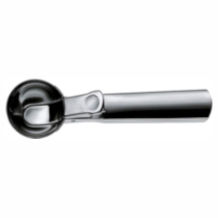
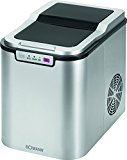
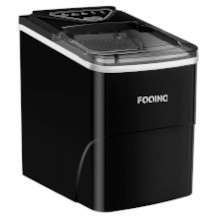

 no reviews
no reviews
